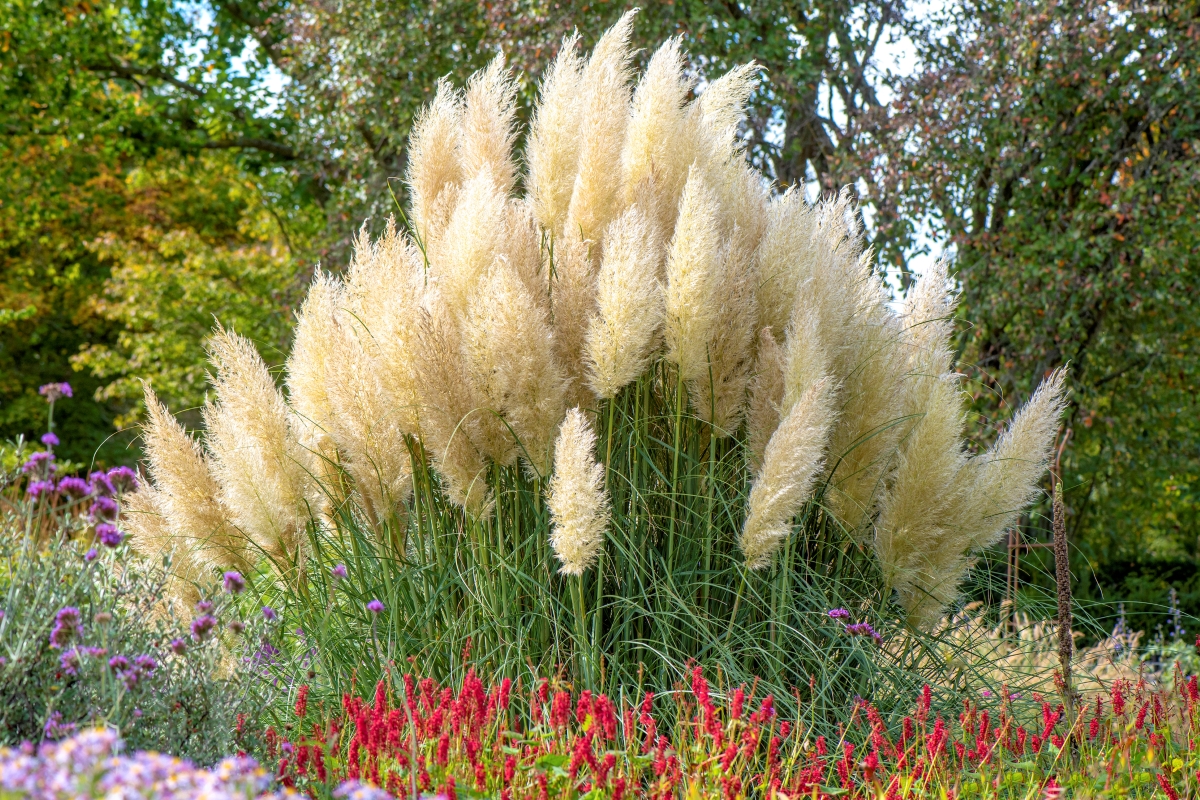We may earn revenue from the products available on this page and participate in affiliate programs. Learn More ›
Grown for their often showy blades and flower stalks, ornamental grasses have a different purpose in the landscape than turf grasses. The plant category, which includes true grasses and some plants that look like grasses, is a versatile lineup of natives, hybrids, and cultivars.
Though often overlooked in favor of traditional turf and flowering plants, ornamental grasses are available in a vast array of greens, golds, reds, and even blues or blacks to add exciting interest to your landscape. Grasses for landscaping are typically easy to maintain, and the many types of ornamental grass plants offer options for sun,shade, xeriscaping, rain gardens, and also includes annual and perennial forms.
Benefits of Ornamental Grasses in Landscaping
Sometimes just a single towering ornamental grass can fill in the blank of a container or landscape design. Depending on the variety and growing conditions, decorative grass plants also can:
- Add color, movement, and textural interest to a garden bed or container.
- Add height for foundation plantings, line hardscaping areas, or function as a screen.
- Offer food or habitat for pollinators and wildlife.
- Thrive in a wide range of growing zones (check out the USDA Plant Hardiness Zone Map).
- Typically serve as low-maintenance plants in the landscape.
- Add visual interest through all seasons, blowing in the wind and leaving colorful seed plumes on long stalks.
- Help stabilize soil and control erosion.
- Thrive in a dry climate once established.
- Serve as a ground cover year after year if a low-growing type that is suited to your zone.
- Thrive with little to no fertilizer, unlike many turf grass varieties.
While the very best landscaping grasses for you will depend on your location and climate, this list will give you some ideas of grasses that might work for your conditions.
1. Purple Fountain Grass (Pennisetum setaceum ‘Rubrum’)
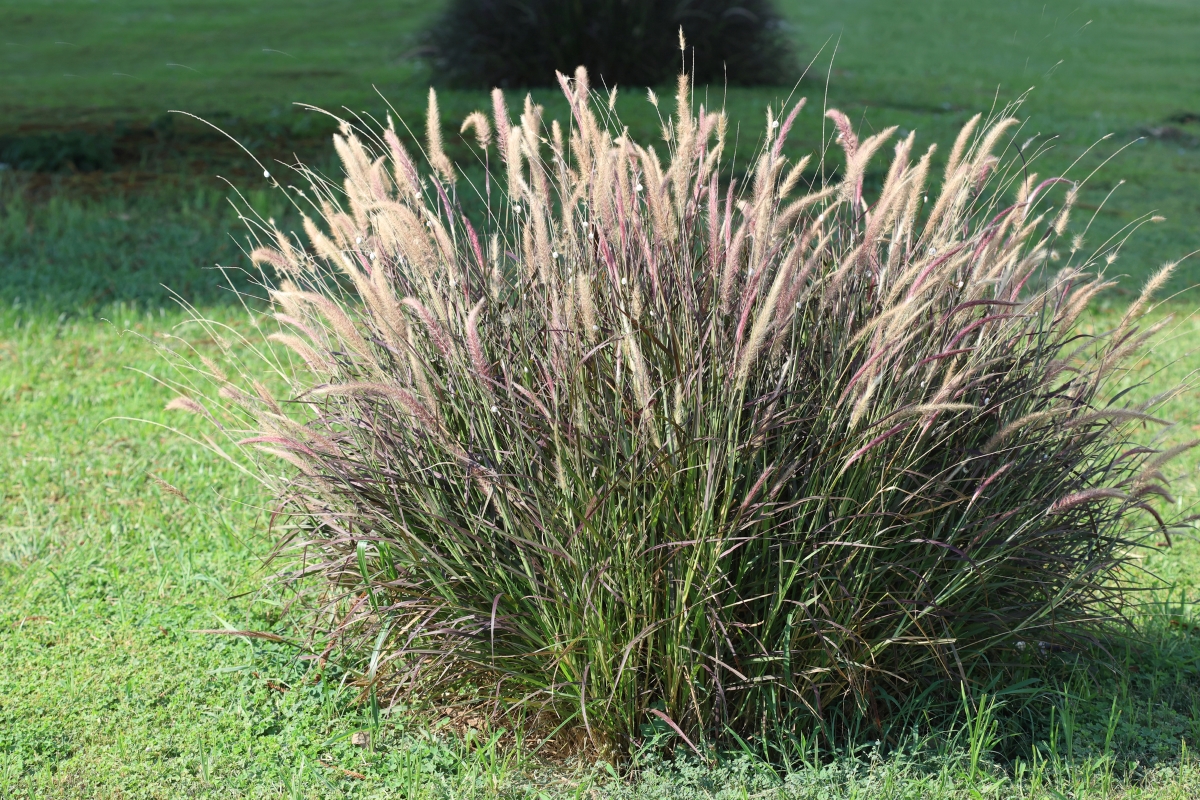
This relative of green fountain grass stands out in the landscape with its burgundy-purple foliage and arching flower spikes in fall. Birds are attracted to the flower heads, but deer do not eat this ornamental grass. It thrives in full sun and with dry to average moisture, and can reach nearly 4 feet tall. Enjoy the foliage and flowers as they fade into winter. Where perennial, trim the blades down to ground level in late winter or early spring.
Best for: Containers, especially where grown an annual, as a cut flower for arrangements
Hardiness zones: 9 and 10 (annual in others)
2. Pheasant Grass (Anemanthele lessoniana)
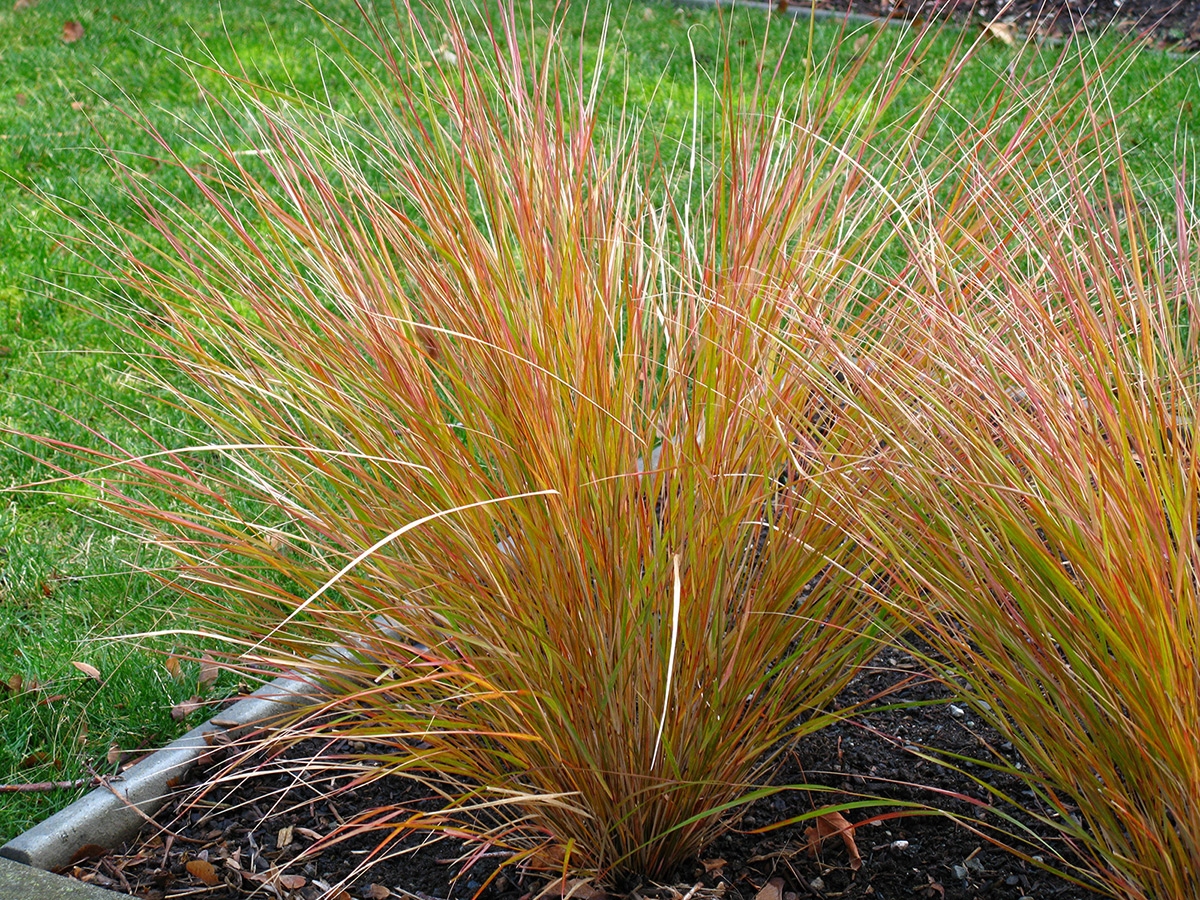
When the weather cools in fall, the blades of pheasant grass (also called stipa or New Zealand wind grass) turn from soft green to shimmering shades of pink and copper, creating a colorful focal point in the autumn and winter garden. The grass forms a 2-foot wide mound, and grows to 1 to 3 feet tall. It loves full sun, will tolerate light drought, and prefers soil that drains well. It is deer-resistant but will attract birds.
Best for: Coastal or cottage garden, perennial border, container
Hardiness zones: 5 to 8
3. New Zealand Hair Sedge (Carex comans ‘Bronco’)
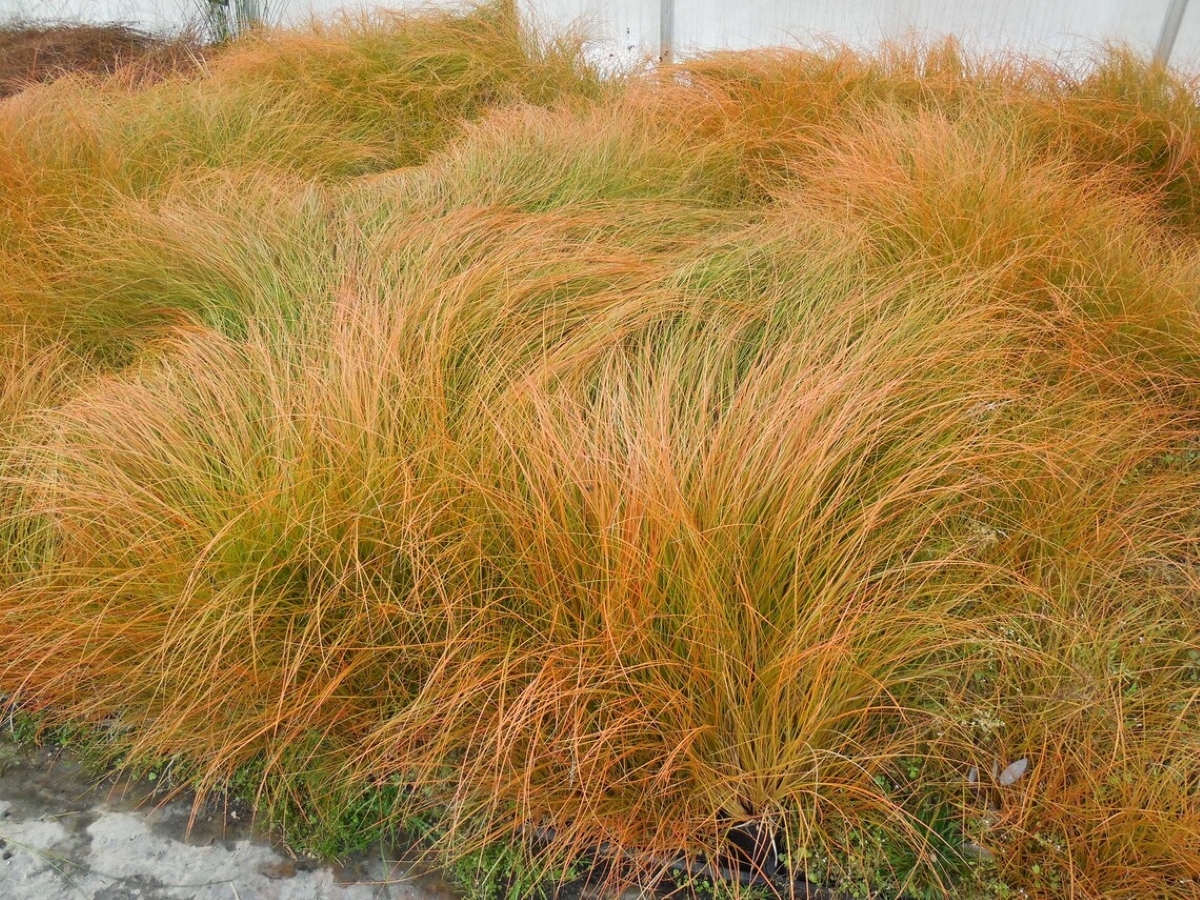
The Bronco variety of sedge maintains a compact, tufted appearance, reaching no more than 2 feet high and wide. Over the summer, its blades turn from green to a blazing shade of bronze. This clumping sedge loves full sun but will tolerate partial shade. Though established plants can handle some drought, it generally likes moist soil. It can add a splash of color on a porch or patio for guests and pollinators.
Best for: Part of combination grass border, mass planting
Hardiness zones: 7 to 10
4. New Zealand Hair Sedge (Carex comans ‘Amazon Mist’)
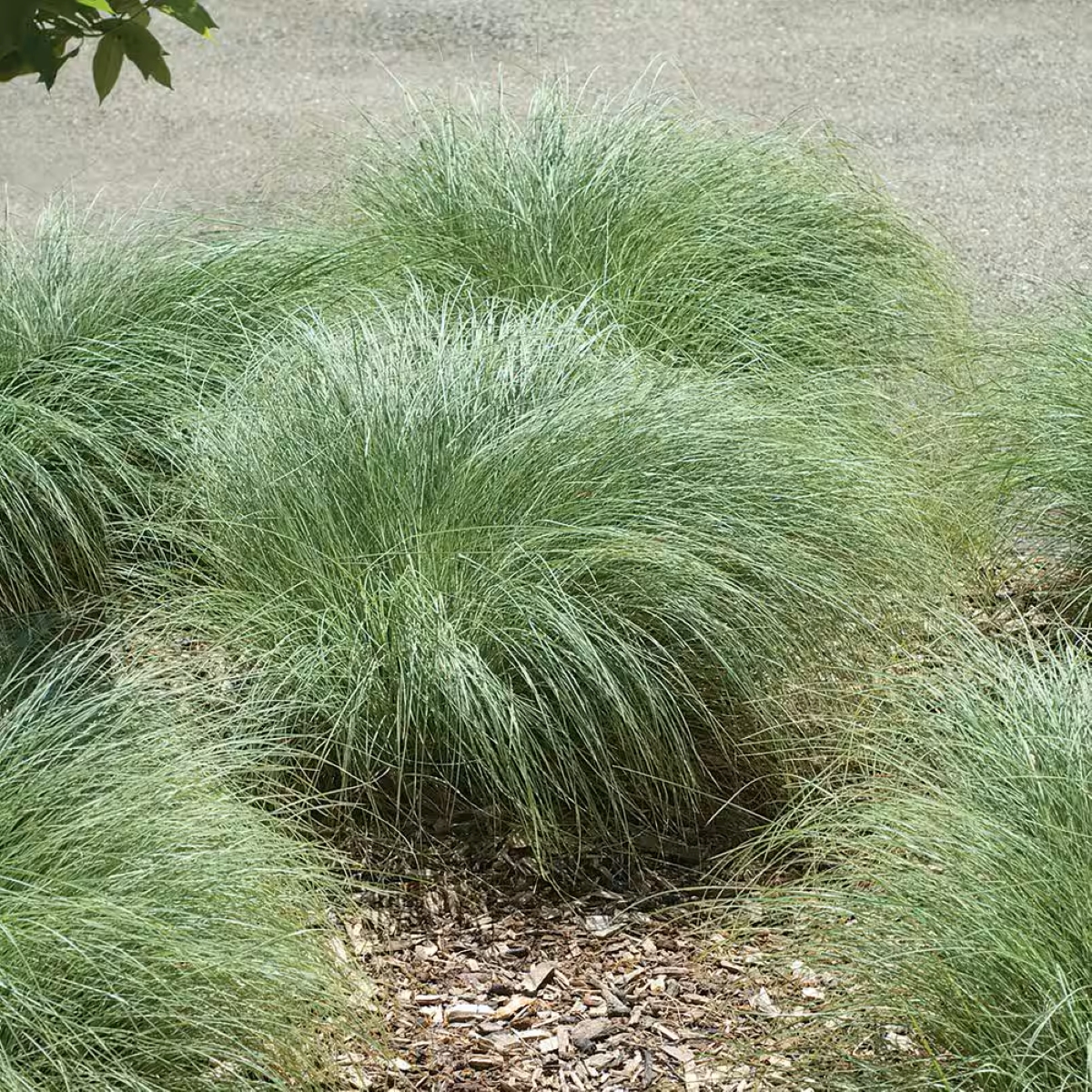
Like Bronco, this sedge features stiff curved blades with delicately twisted tips that gracefully arch outward to create a tufted look. Amazon Mist blades are variegated light green with creamy white stripes. The plant reaches 12 inches high with a 12-inch spread. Once established, Amazon Mist withstands light drought conditions, but it should be watered weekly during its first year. Plant the ornamental grass in well-draining soil where it receives full sun. For a natural effect, locate the plant in the middle of a perennial border in combination with other ornamental grasses.
Best for: Middle of combination border, rock garden, pollinator garden
Hardiness zones: 6 to 9
5. Leatherleaf Sedge (Carex buchananii ‘Red Rooster’)
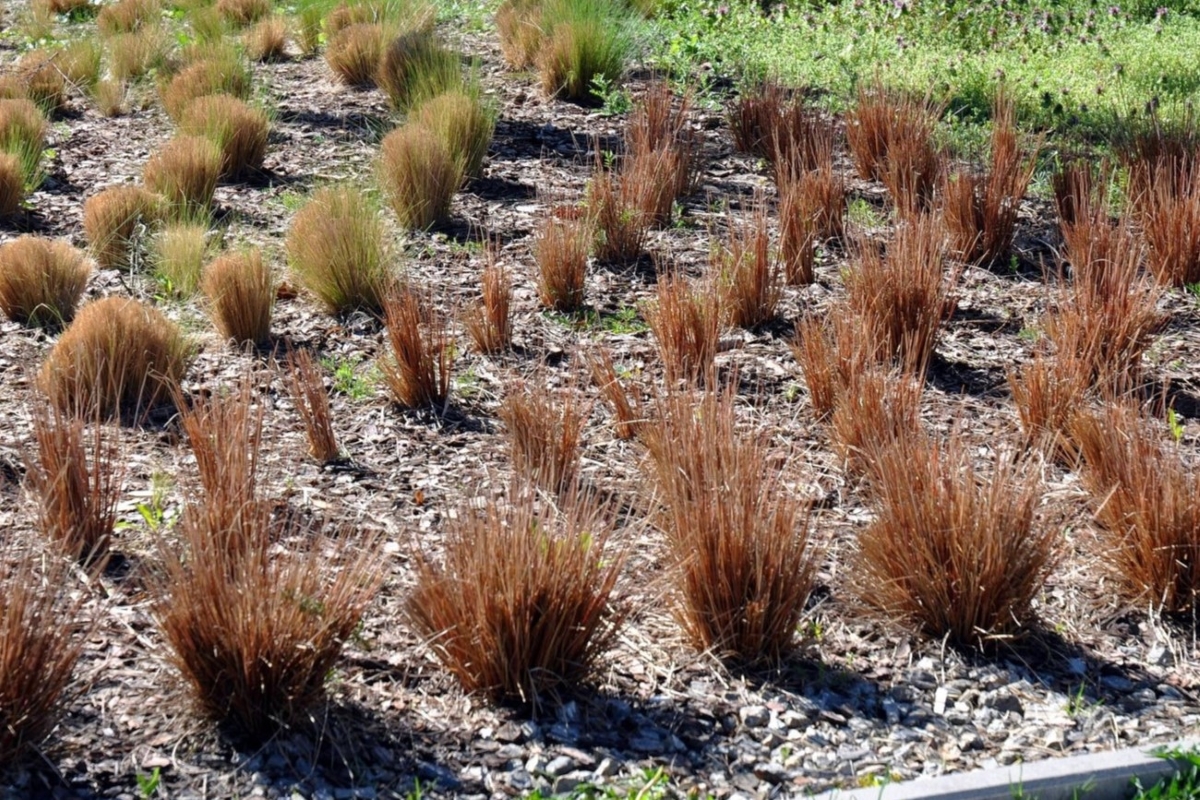
Carex red rooster sedge grass sends up brilliant bronze blades with curled tips to a height of 2 feet at maturity. Its tall, narrow habit (only 12 to 18 inches wide) makes it a colorful backdrop for other grasses, flowers, or small garden shrubs. This sedge prefers full sun to partial shade. Like most ornamental grasses, it’s low maintenance, but it’s a short-lived perennial of 2 to 3 years). It prefers moist soil but can withstand light drought conditions after its first year.
Best for: Back of a flower bed or container, mass planting or border
Hardiness zones: 6 to 9
6. Blue Fescue (Festuca ovina glauca)
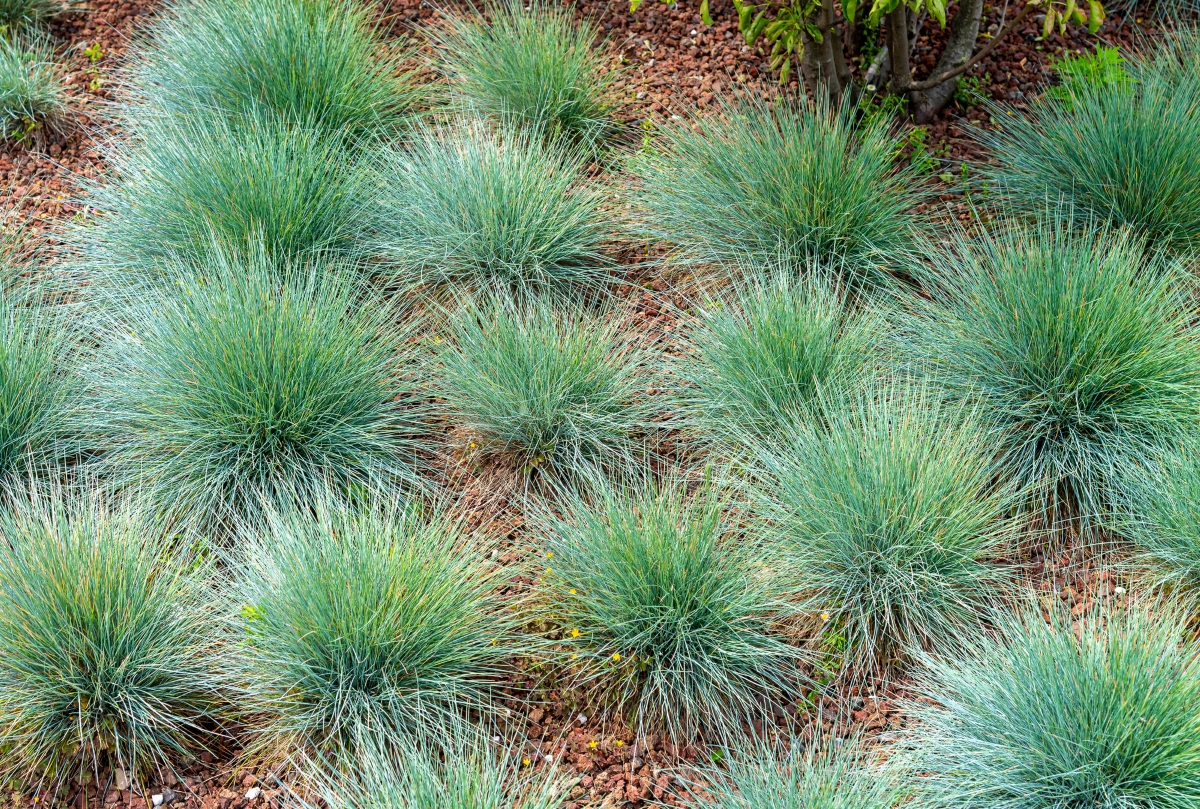
Blue fescue brings the sunny garden an eye-catching blue-gray hue and a fun texture. This attractive and tough plant grows in puffy clumps, reaching about 12 inches high and wide. It likes well-draining soil and can tolerate light drought conditions but needs weekly water its first year. Locate flue fescue where its cool color will contrast nicely against tan or bronze grasses or shrubs.
Best for: Rock gardens, containers, in front of taller grasses
Hardiness zones: 4 through 8
7. Little Bluestem (Schizachyrium scoparium)
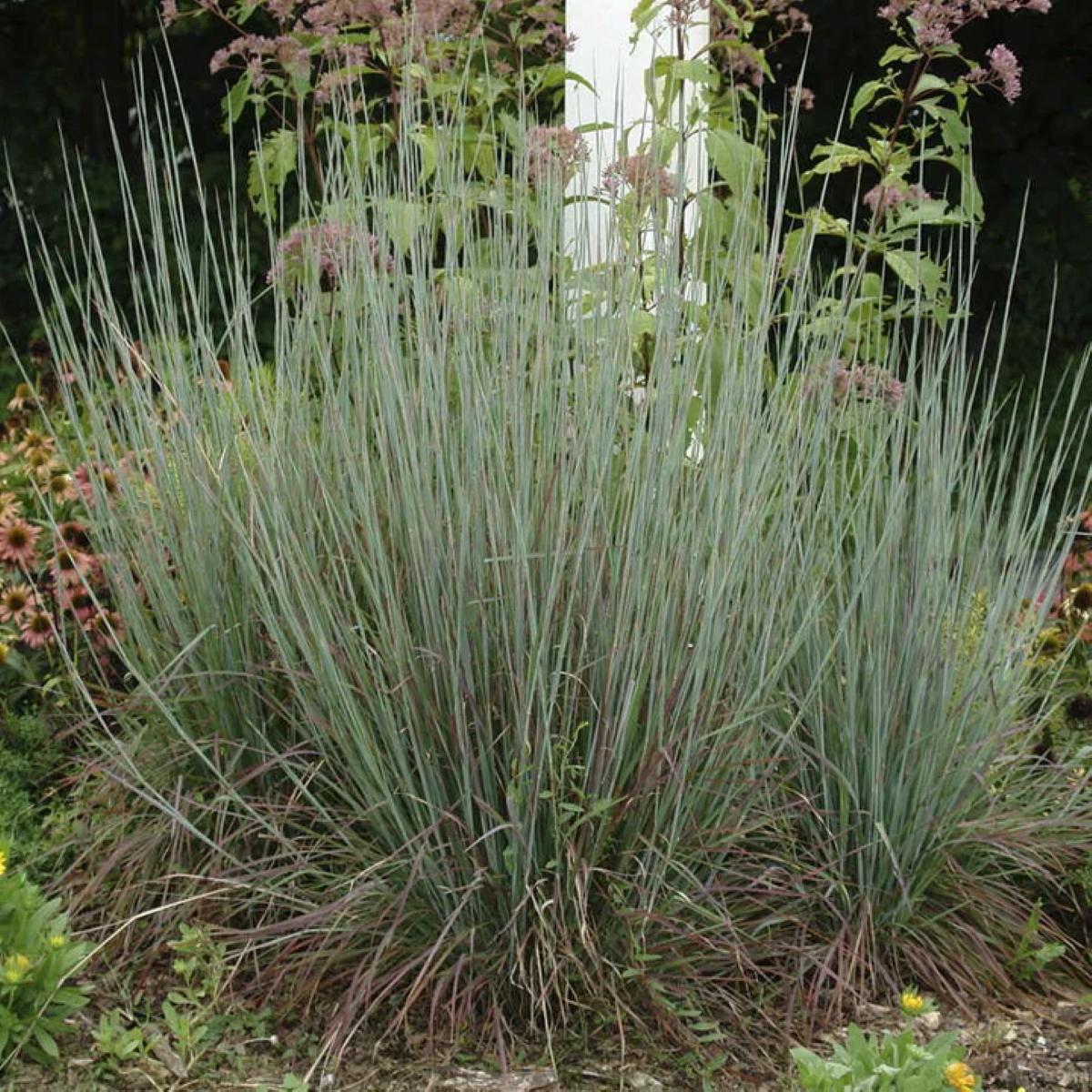
Support skipper butterflies and add clumps of blue-green color to the landscape by planting several little bluestem grasses. The drought-tolerant grass with attractive foliage reaches a height of 2 to 3 feet in summer throughout most growing zones. It’s an excellent grass for meadows as a backdrop for prairie flowers or near ponds that deer visit, since they typically leave the grass alone. Give this tall ornamental grass full sun and most any type of soil.
Best for: Mass plantings in meadows or around ponds, xeriscaping
Hardiness zones: 3 through 9
8. Big Bluestem (Andropogon gerardii)
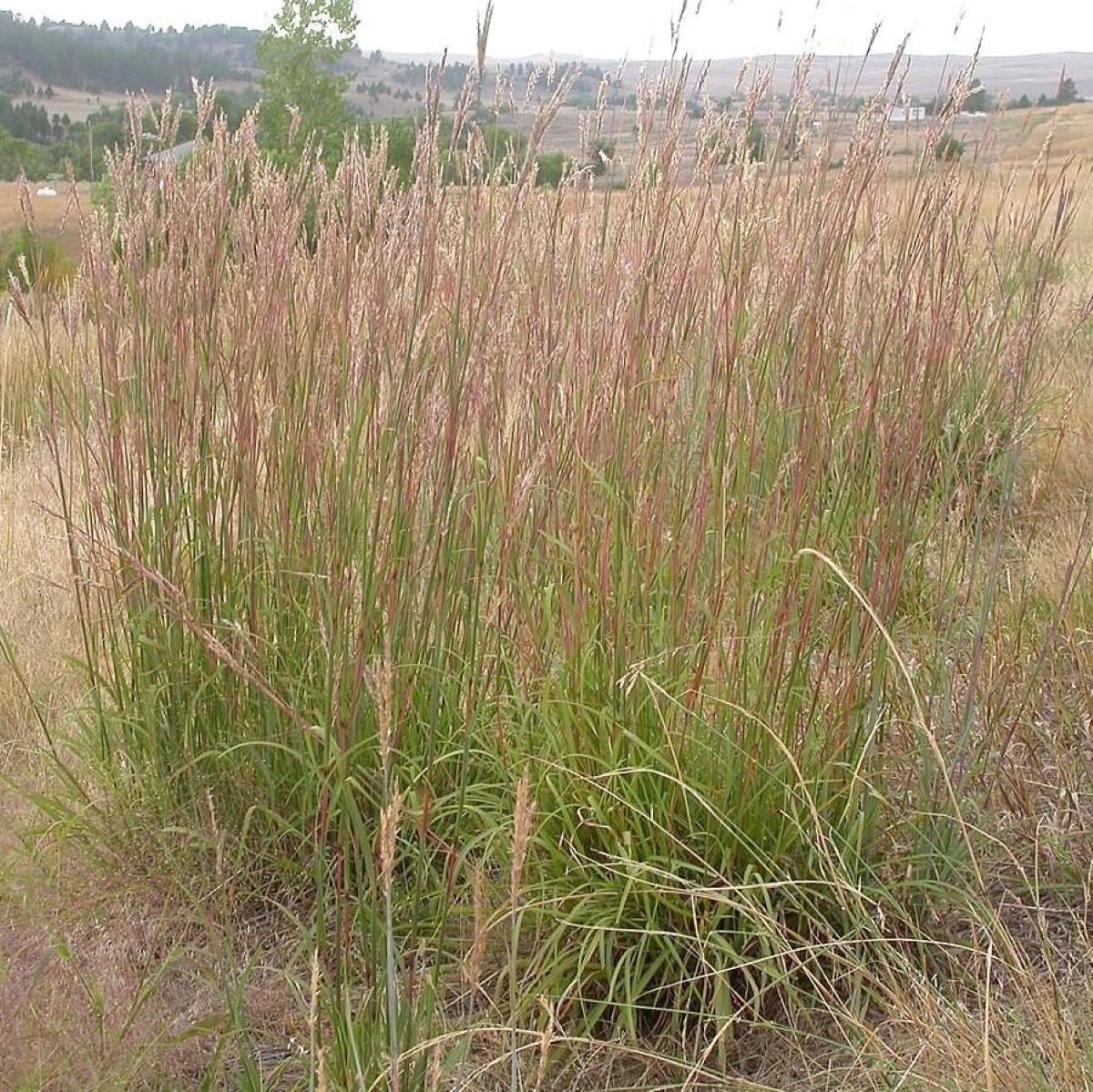
Also with blue-green leaves, big bluestem is a taller grass—native to the eastern two thirds of the United States—that can reach 3 to 8 feet high, making it among the best tall ornamental grasses for privacy. The clumps start out mostly green before taking on their blue-green hue; in fall, they turn a deep red bronze. Left to sway in the breeze over winter, they can support birds or host pollinators, while deer will pass them by. Big bluestem thrives in full sun and soil that drains well. Once established, it’s also a good drought-tolerant tall ornamental grass.
Best for: Privacy screen, winter interest, drought-tolerant gardens
Hardiness zones: 4 through 9
9. Phoenix Green Sedge (Carex comans ‘Phoenix Green’)
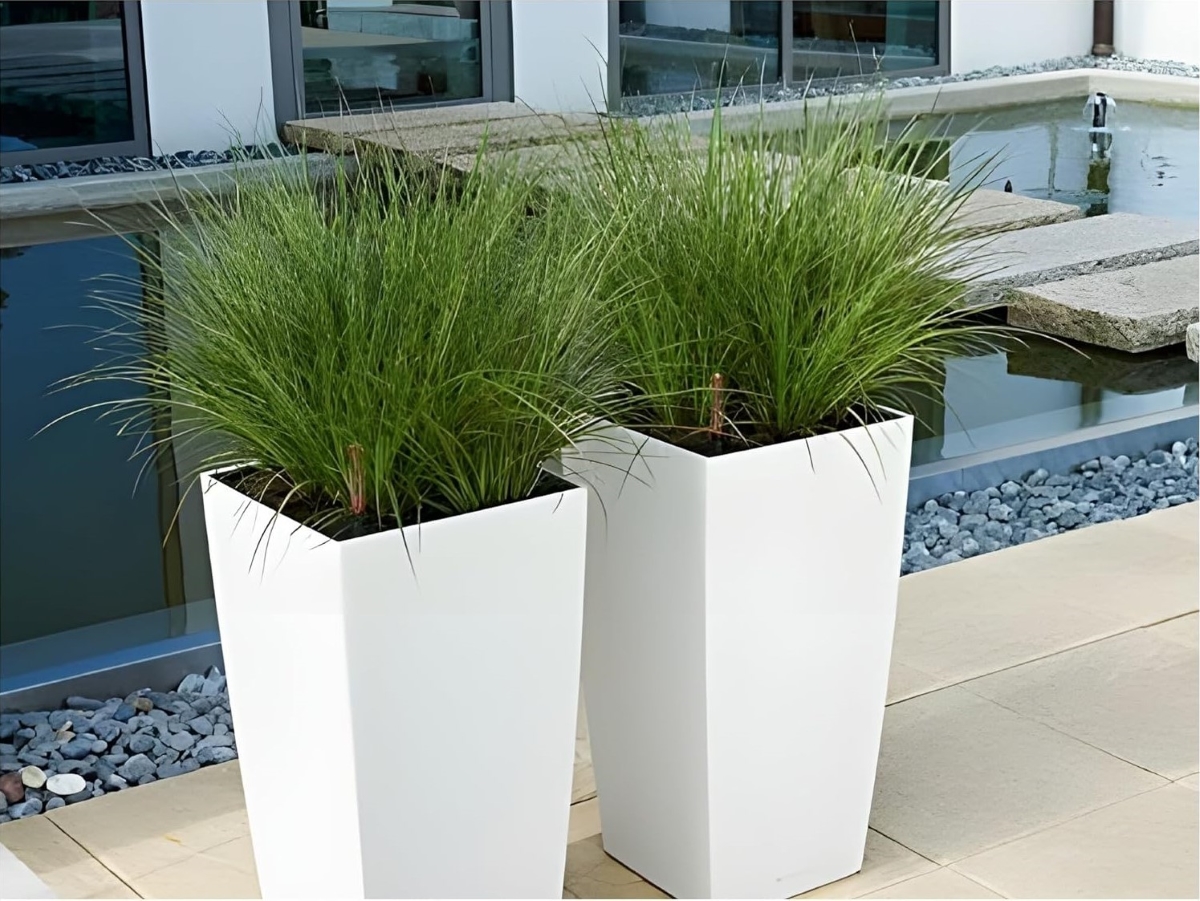
Gorgeous Phoenix Green New Zealand hair sedge forms a bright green cluster of sturdy upright blades, reaching 20 inches high and wide at maturity. It prefers shade or partial sunlight and doesn’t do well under hot afternoon sun. Doing best in rich, moist soil, this grass-like plant is a bit thirstier than other sedge varieties. A wonderful ornamental grass for shade, consider featuring the green beauty as a specimen plant in a landscaped bed located under the spreading branches of a large tree.
Best for: Shade gardens, under trees, rain gardens
Hardiness zones: 6 to 10
10. Blue Arrows Rush (Juncus inflexus ‘Blue Arrows’)
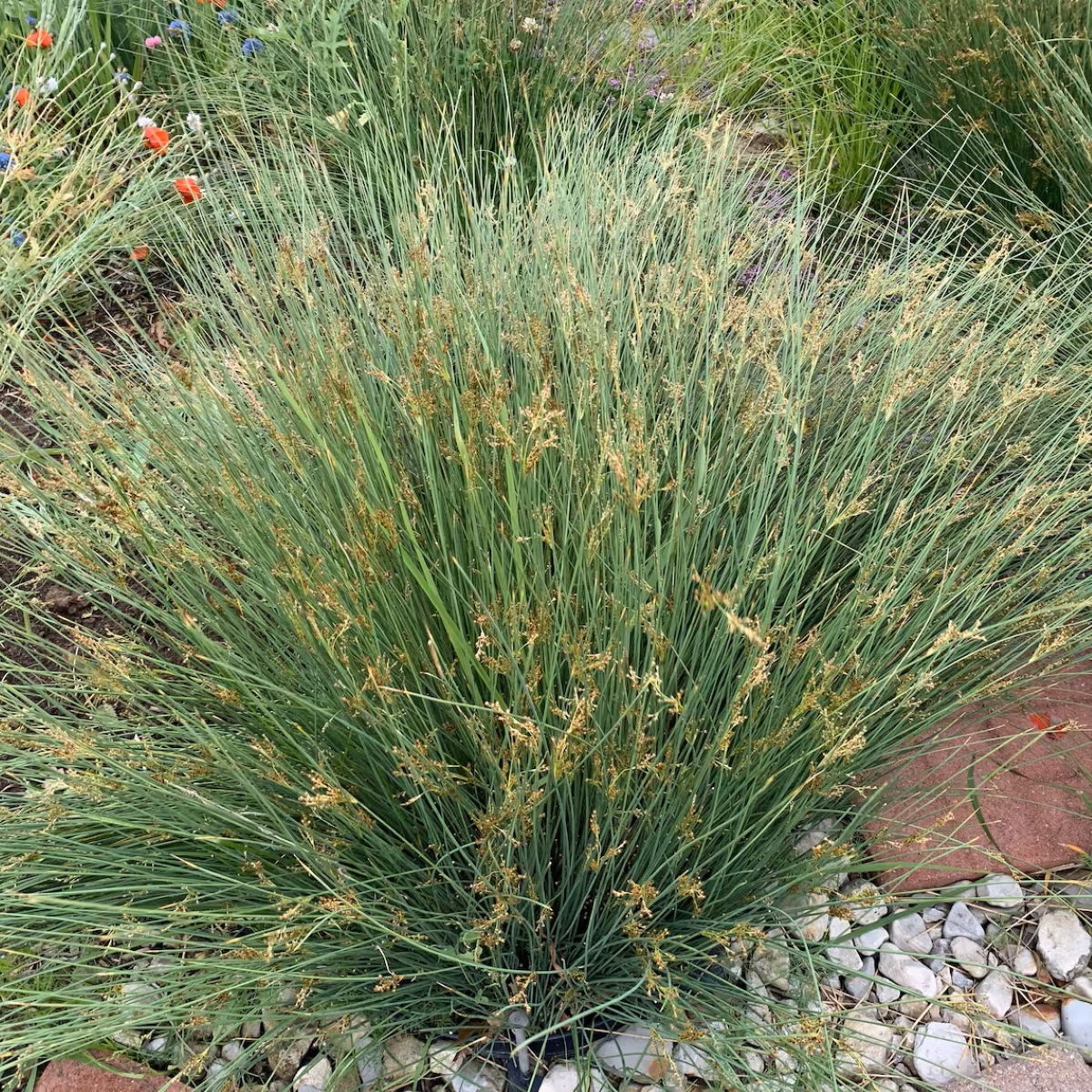
A member of the rush grasses, this Juncus features stiff upright blades that reach up to 3 feet tall while maintaining a narrow 12-inch spread. While it tolerates light drought conditions (after fully grown), it also thrives in moist areas. Among the most decorative grasses, juncus plants prefer full sun and alkaline to neutral soil. Blue Arrow stuns when a small grouping serves as a backdrop for shorter grasses or showy flowering plants.
Best for: Container thriller, around ponds and water features or rain gardens
Hardiness zones: 5 to 9
11. Pony Tails Mexican Feather Grass (Nassella tenuissima ‘Pony Tails’)
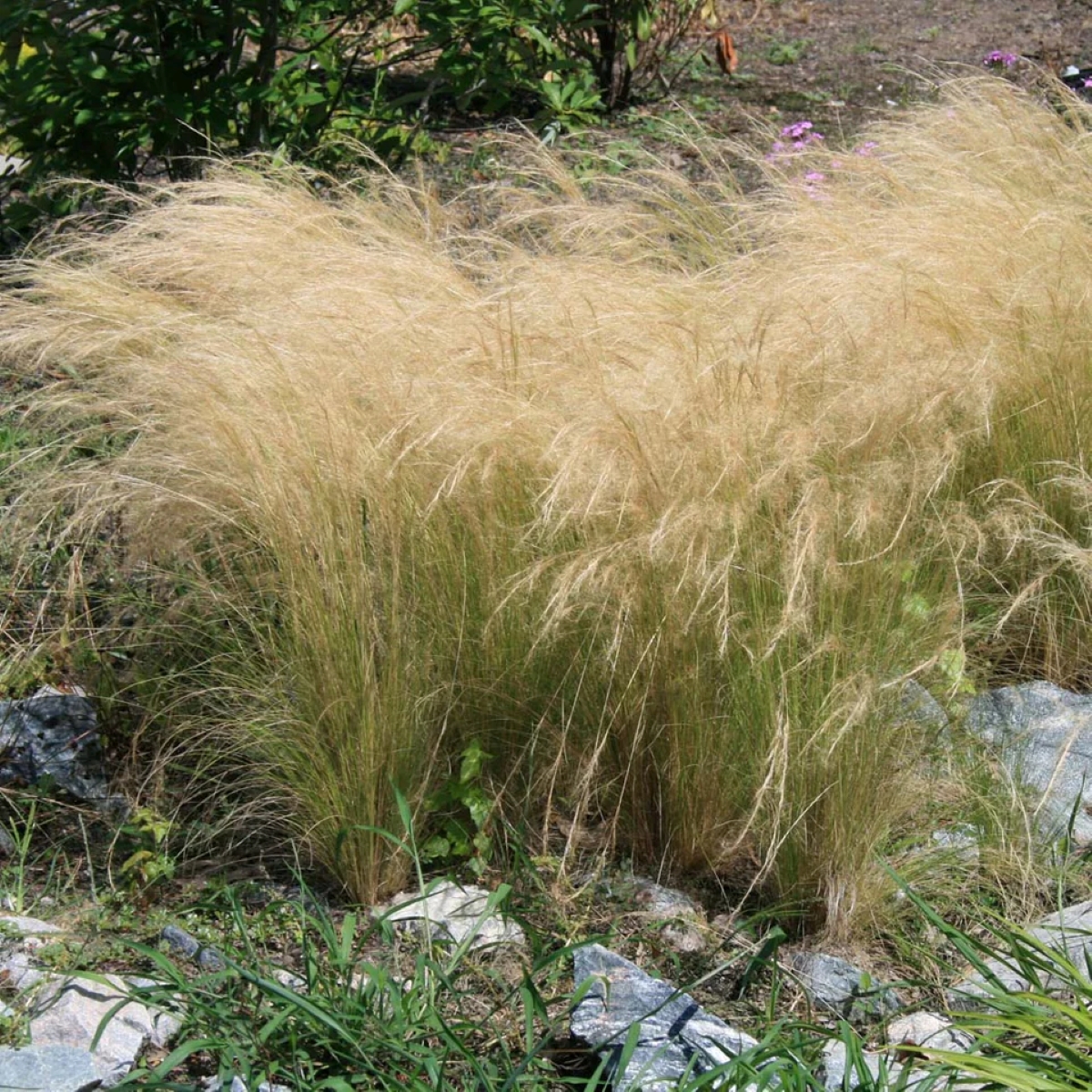
Previously known as Stipa tenuissima ‘Pony Tails’, this ornamental grass is a showstopper from July through late fall, producing silky golden plumes that shimmer in the sun. This Mexican feather grass features fine, needle-like blades that reach 2 feet tallt and wide. It prefers a sunny location and well-draining soil. It needs weekly water its first year, but then is drought-tolerant. It’s also a deer-resistant grass.
Best for: Flower bed, rock garden, or featured in a perennial border
Hardiness zones: 6 to 10
12. Snowy Woodrush (Luzula nivea)
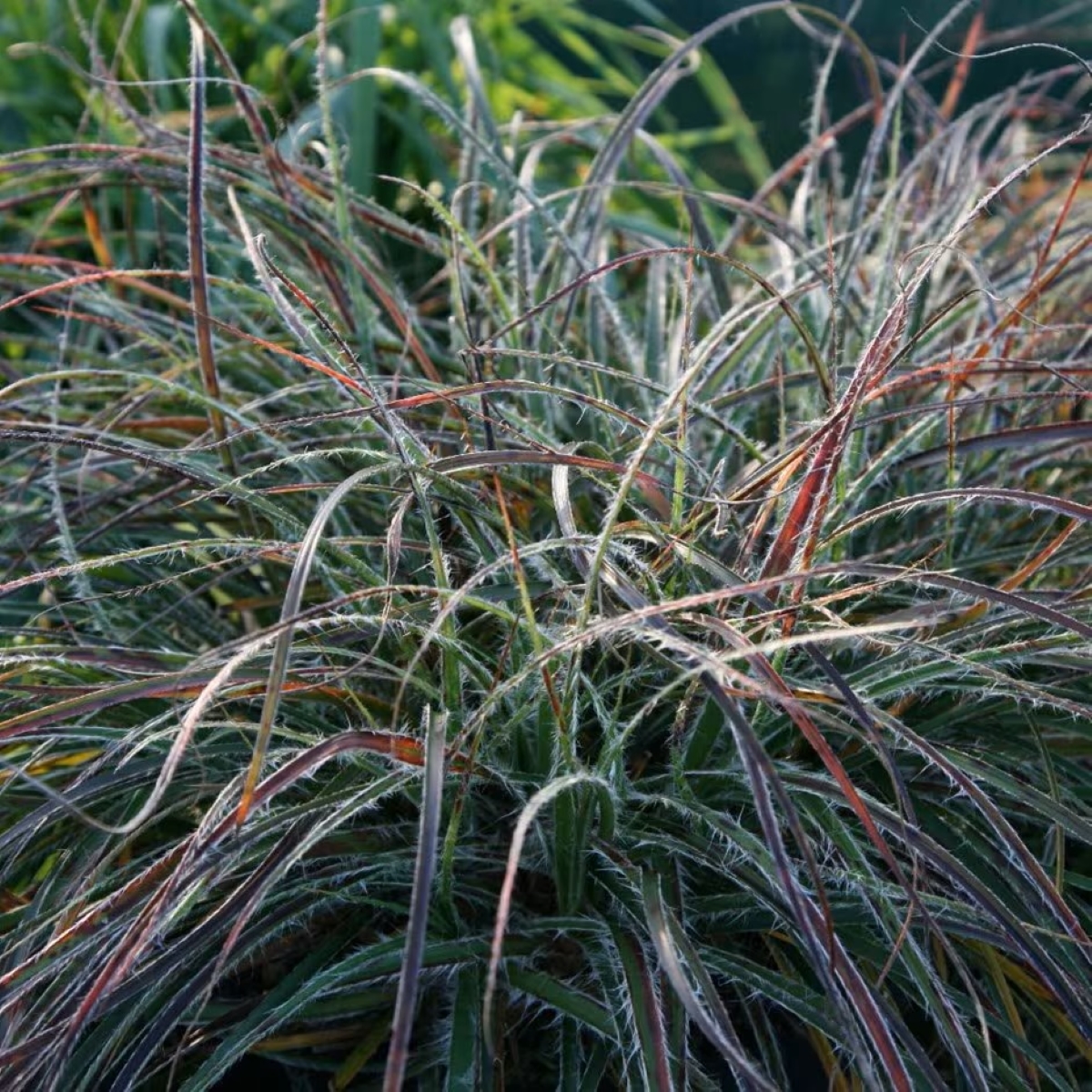
In spring, snowy woodrush, also called snow rush, delights with a show of pure white flowers rising above its gray-green blades. This impressive ornamental grass of spiky green blades with white hair-like fringe reaches 6 inches to 12 inches high and can spread up to 18 inches wide. Snowy woodrush prefers a shady location and moist soil—water weekly. Snow rush is an evergreen perennial.
Best for: Container filler, edging, shady flower beds
Hardiness zones: 5 through 8
13. Pampas Grass (Cortaderia selloana)
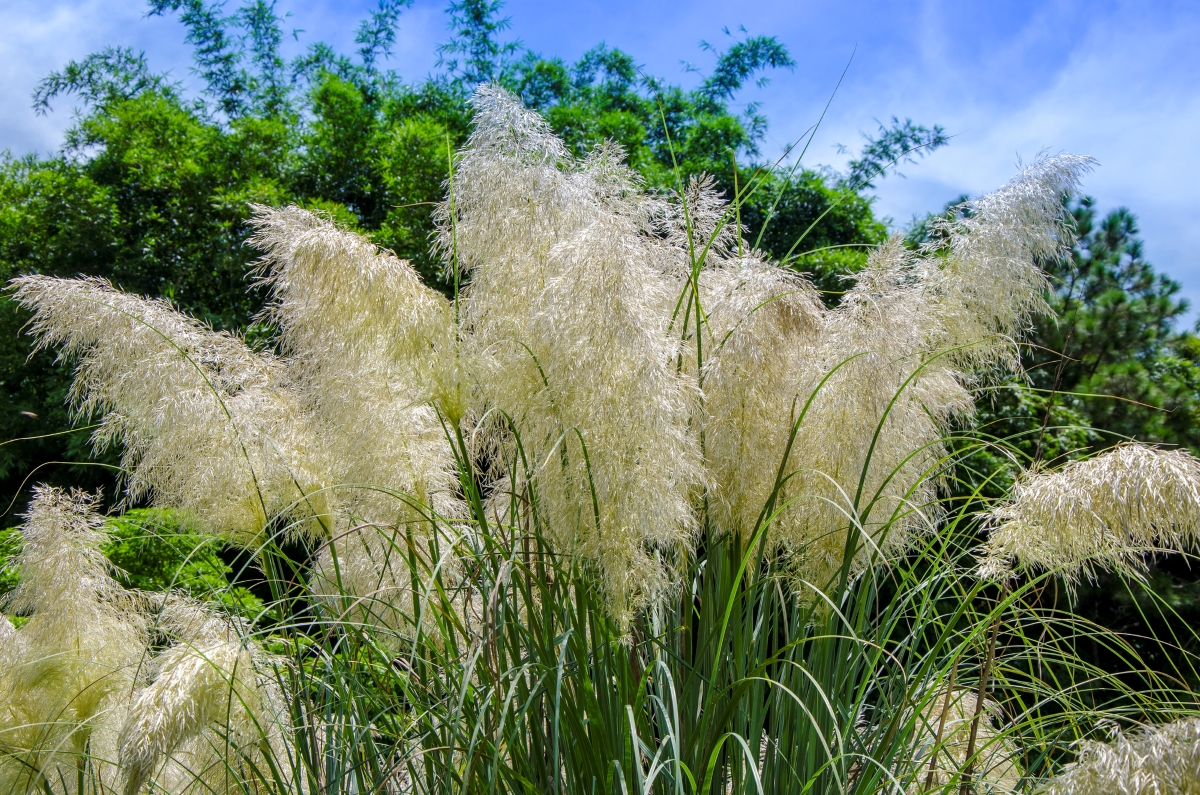
A mature pampas grass can grow up to 10 feet tall and 6 feet wide. In summer, it sends up large creamy white or light pink plumes for a bold and exotic look. Just beware that this non-native grass is considered invasive in many states because of the thousands of seeds each plume produces, so look for sterile varieties. It can grow in sand and any well-draining soil and prefers full sun. When mature, pampas will tolerate drought, but needs biweekly water during its first growing season to establish a good root system.
Best for: Tall feature at the back of a perennial bed, privacy screen, cut floral arrangements
Hardiness zones: 7 to 10
14. Hameln Fountain Grass (Pennisetum alopecuroides ‘Hameln’)
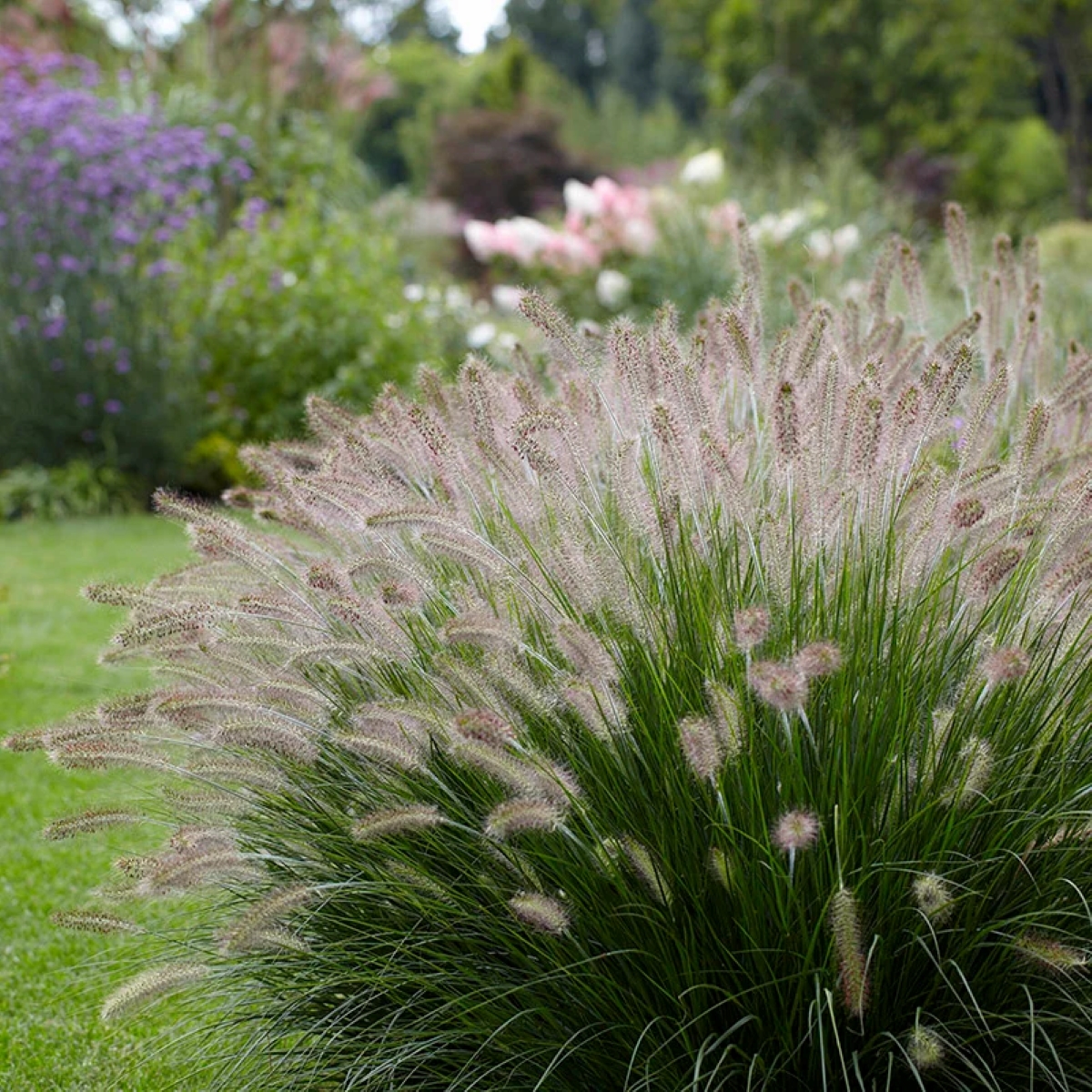
A favorite of professional landscapers, all fountain grass species have some of the prettiest flower heads of ornamental grasses. Hameln is an option when a compact but attractive fountain grass suits a bed or container. Growing to only about 2 feet tall, this fountain grass has bright green blades and silvery-white flowers in autumn. It’s deer-resistant and among the cold-hardy fountain grasses, but grows best in the Piedmont region of the Eastern U.S.
Best for: Mass plantings, cut dried flowers, containers, winter interest
Hardiness zones: 5 through 9
15. Hot Rod Switch Grass (Panicum virgatum ‘Hot Rod’)
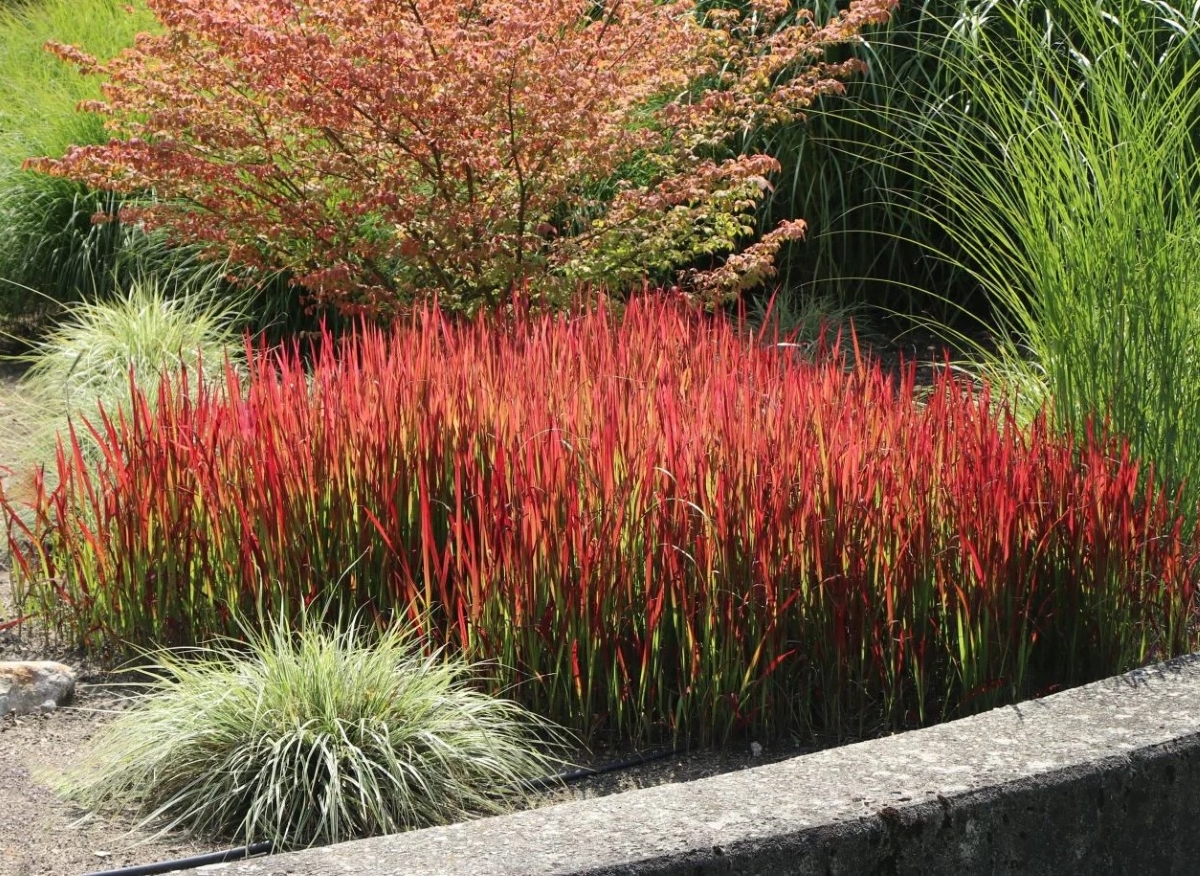
For a striking display of color, the native hot rod switch grass transforms from muted blue-green to blazing burgundy in mid-summer. This ornamental specimen reaches 4 feet high but maintains a compact 2-foot spread. It prefers well-draining soil that won’t become soggy. hot rod switch grass grows in either full or partial sun. It is salt-tolerant and while it also tolerates light drought conditions at maturity, weekly watering is recommended for its first year.
Best for: Back of a flower bed or perennial border
Hardiness zones: 4 through 9
16. Japanese Silver Grass (Miscanthus sinensis ‘Silverbell’)
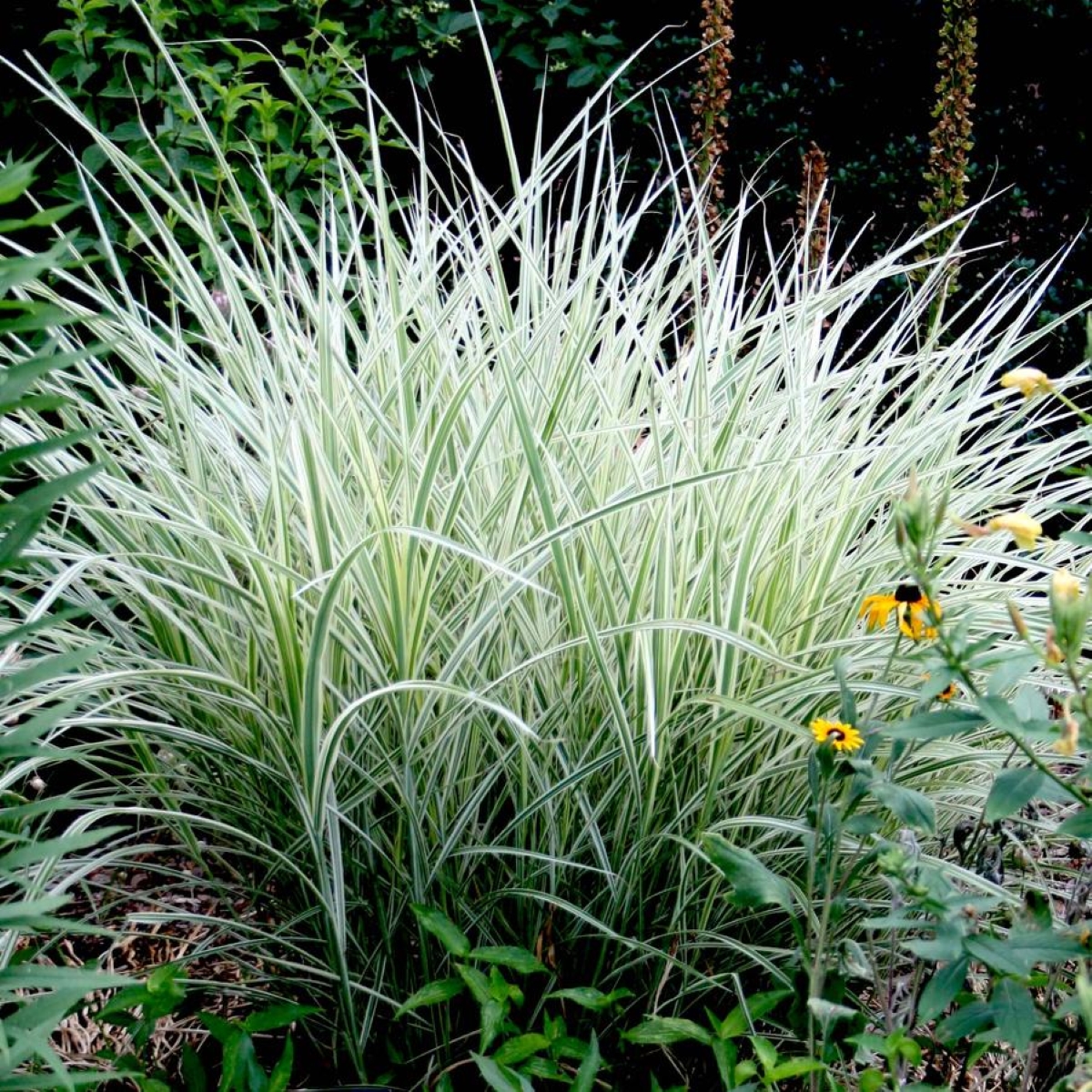
Sometimes called “maiden grass,” Japanese silver grass forms an upright mound, eventually reaching 30 to 60 inches in both height and width. This variety has a noticeable yellow band of variegation on each leaf and silvery-pink flower heads. Plant it in full sun in well-draining soil. Just beware that the non-native plant can spread out of control and is considered invasive in several areas of the Eastern U. S. If spread is a concern, remove the seed heads or check for nearby seedlings in fall and pull them up.
Best for: A thriller in a container or as a border or screen
Hardiness zones: 4 to 9
17. Overdam Feather Reed Grass (Calamagrostis x acutiflora ‘Overdam’)
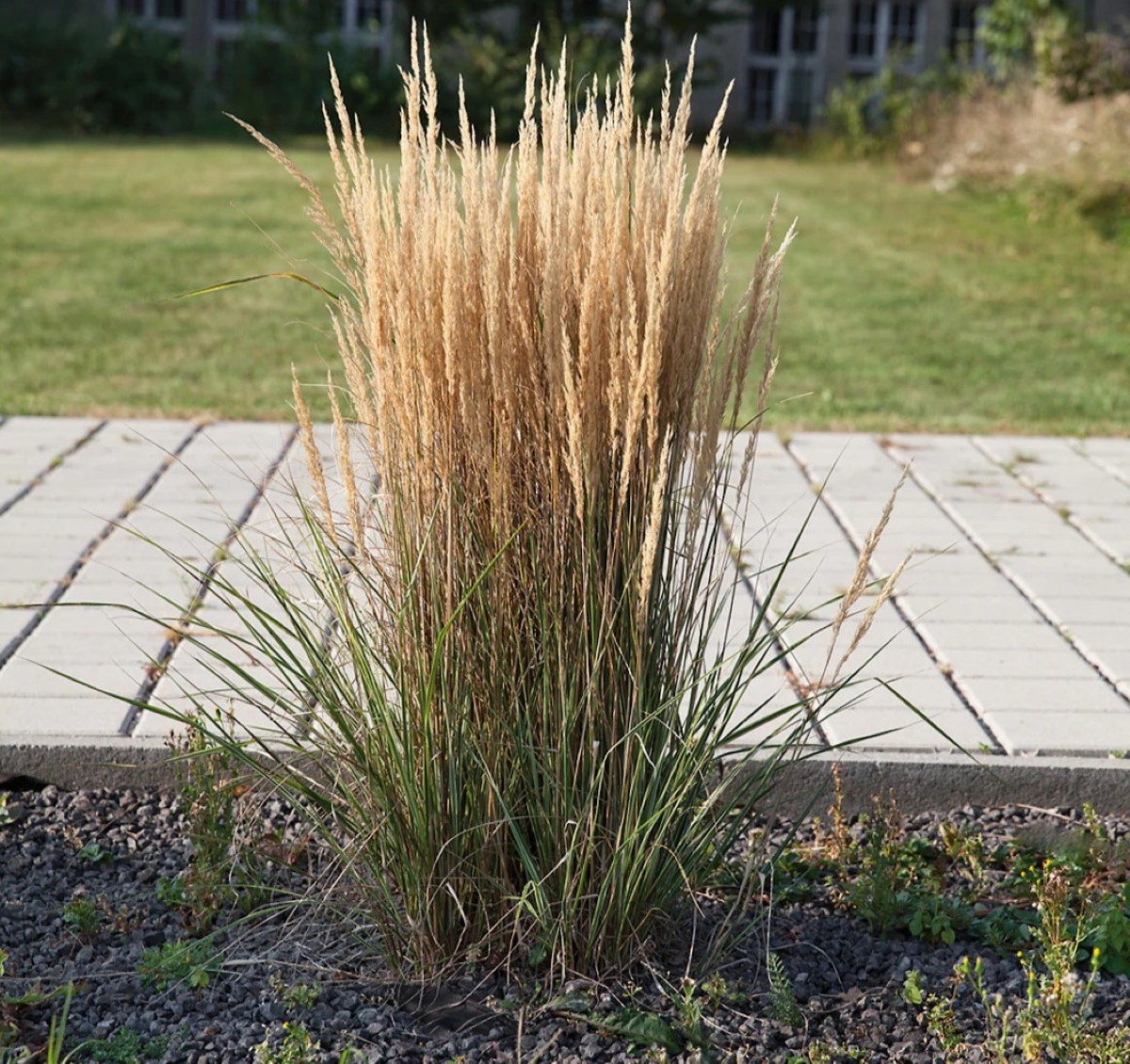
Add a splash of cheerful gold to your autumn landscape with Overdam feather reed grass. This showy, cool-season ornamental grass needs lots of sun and a little shade to fully develop its rich red-brown plumes that turn gold in fall. The delicate feathery spikes rise to 6 feet tall, soaring above the 2 feet tall and wide clump of grass. Plant in well-draining soil and water weekly.
Best for: Vertical interest at back of beds, as a row or mass planting, cut flower arrangements
Hardiness zones: 4 through 9
18. Regal Mist Pink Muhly Grass (Muhlenbergia capillaris ‘Lenca’)
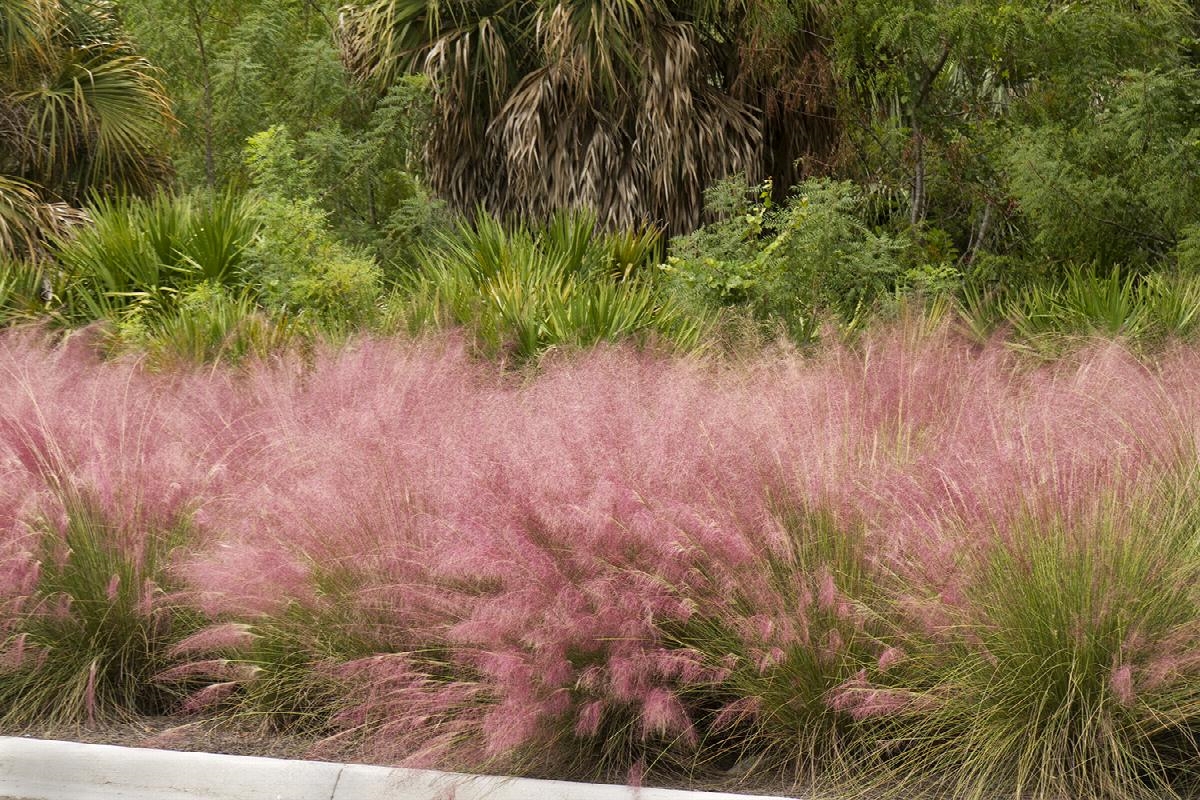
Revered for its extraordinary pink plumage, Regal mist pink muhly grass adds texture, color, and movement to a landscape. In spring, the native plant forms a glossy green mound reaching 4 feet high and 3 feet wide. In mid-summer, it bursts into bloom, with stunning and airy pink plumes that sway in the lightest breeze. This ornamental needs sunshine, but choose a location shielded from harsh afternoon sun. Plant in well-draining soil and water weekly for its first year and during hot temperatures in subsequent years; otherwise, it can handle some drought.
Best for: Specimen plant, before a solid wall, native and natural landscape designs
Hardiness zones: 6 through 9
19. Japanese Forest Grass (Hakonechloa macra)
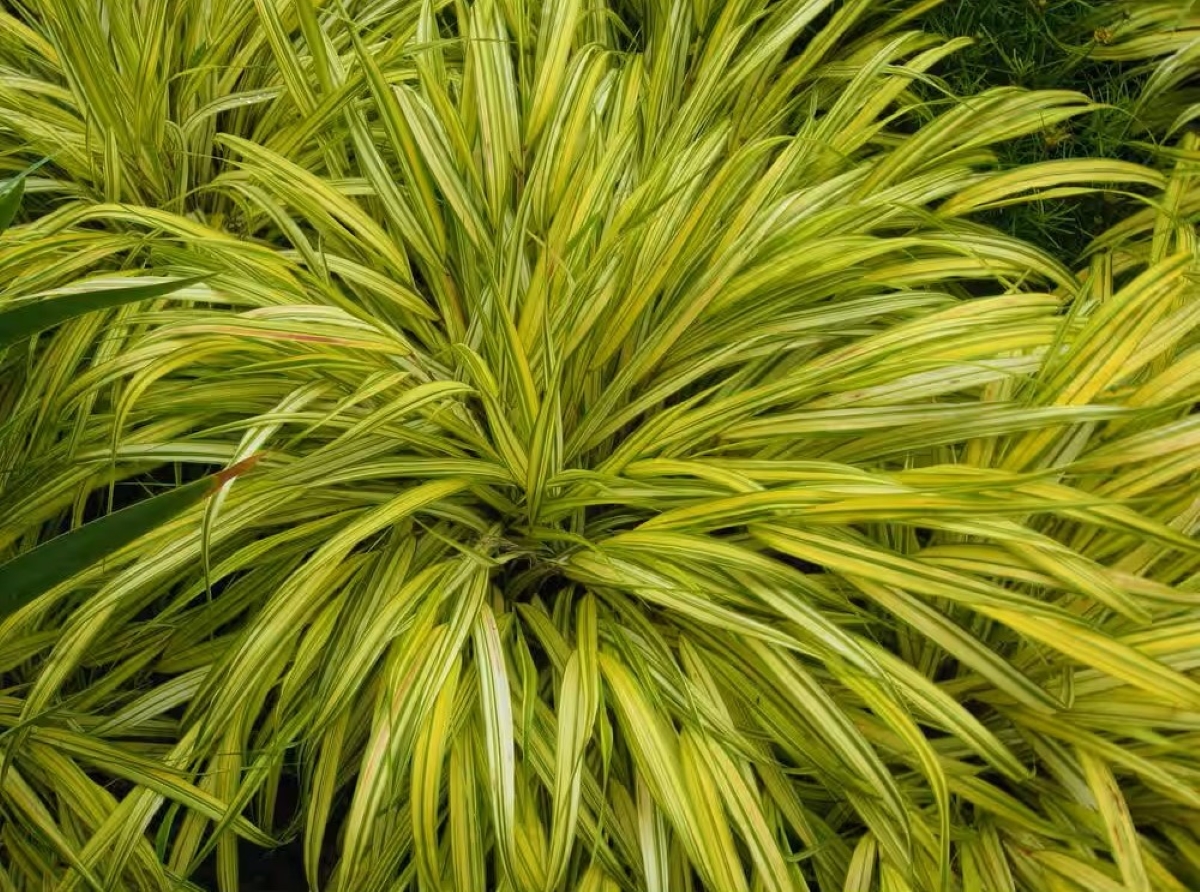
This Japanese native spreads by runners, but it is not considered an invasive plant in the U. S. It is considered a beauty in moist, shady areas of the garden. In fact, its variegated blades that can feature yellow or white striping actually produce more color if they receive at least partial or dappled shade. Some varieties also feature red and orange on the leaves in fall. It typically grows less than 2 feet high and wide in a dense form with arching blades, serving as a good ornamental grass option to double as a ground cover.
Best for: Containers, ground cover under trees, woodland gardens
Hardiness zones: 5 to 9
20. Indian Grass (Sorghastrum nutans)
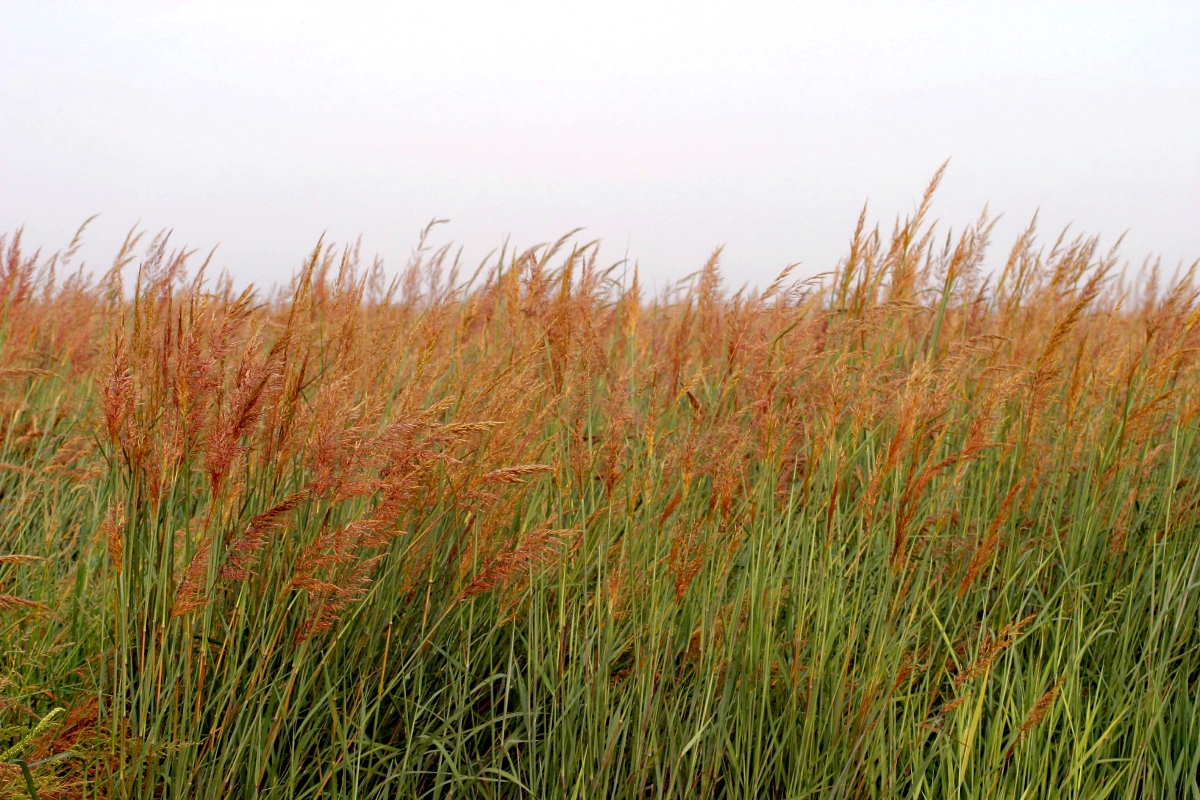
This native to the Southeastern U. S. is a perennial, warm-season bunch grass. It thrives in well-draining soil and full sun, and once established, it can tolerate drought. Growing up to 7 feet tall and no more than 2 feet wide, it adds vertical interest. The blue-green leaves are topped off with rich gold flower plumes by late summer. Deer tend to leave Indian grass alone, but the grass provides cover or food for birds and small mammals.
Best for: Around ponds, natural meadows,native and pollinator gardens
Hardiness zones: 4 through 9
21. Zebra Grass (Miscanthus sinensis ‘Zebrinus’)
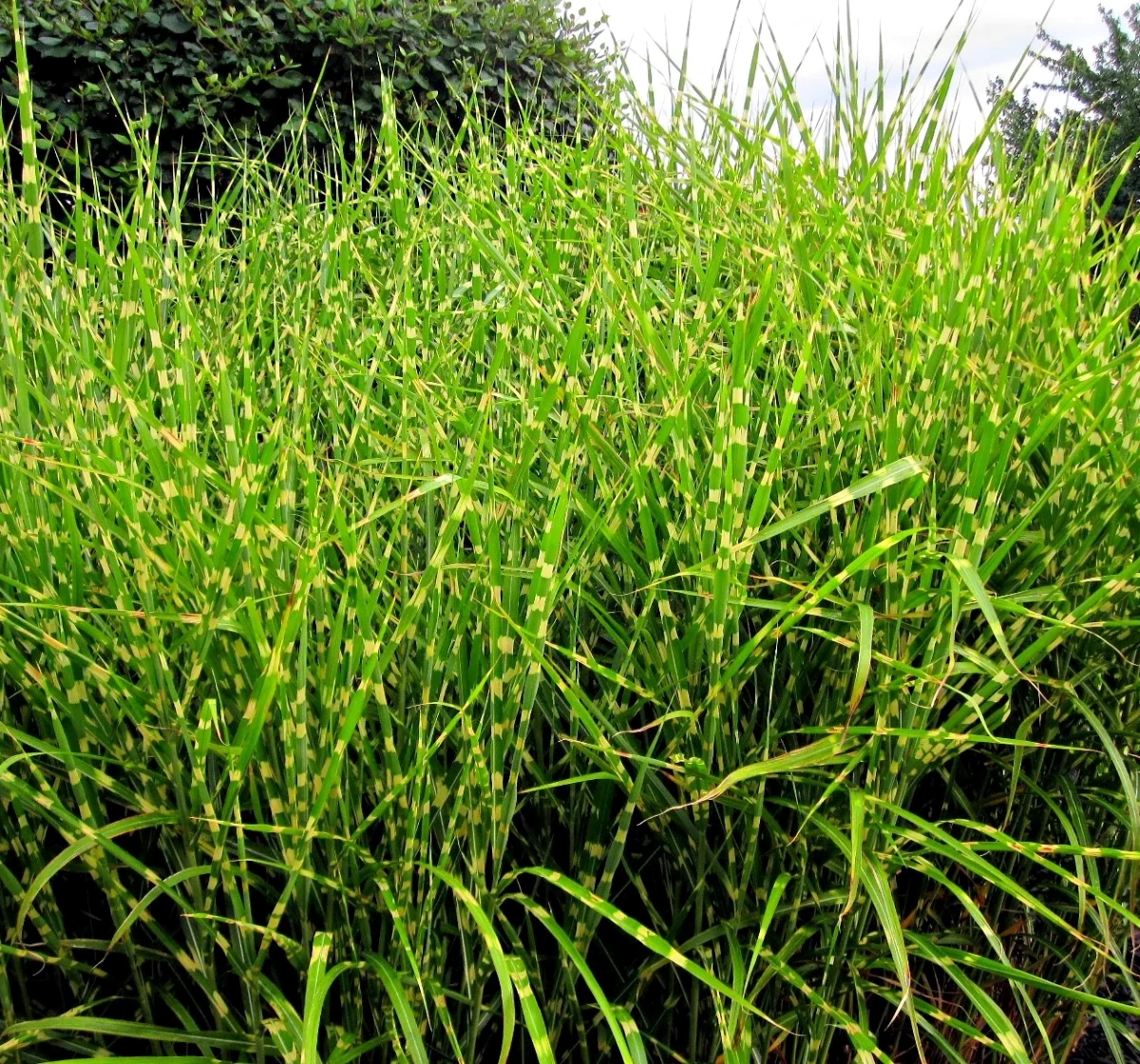
A relative of Japanese silver grass, zebra grass features horizontal bands on its long, narrow foliage. The blades grow in an arching form, resembling a fountain and eventually reaching nearly 7 feet high and 4 to 6 feet around. In late summer, copper-colored flowers appear on flower stalks that rise just above the foliage and fade to silvery white for winter interest. Give zebra grass at least 6 hours of sun a day and opt for soil that drains well. Water it regularly to keep the ground around the grass evenly moist.
Best for: Ponds and naturalized beds or meadows, small borders
Hardiness zones: 4 through 9
22. Black Mondo Grass (Ophiopogon planiscapus ‘Nigrescens’)
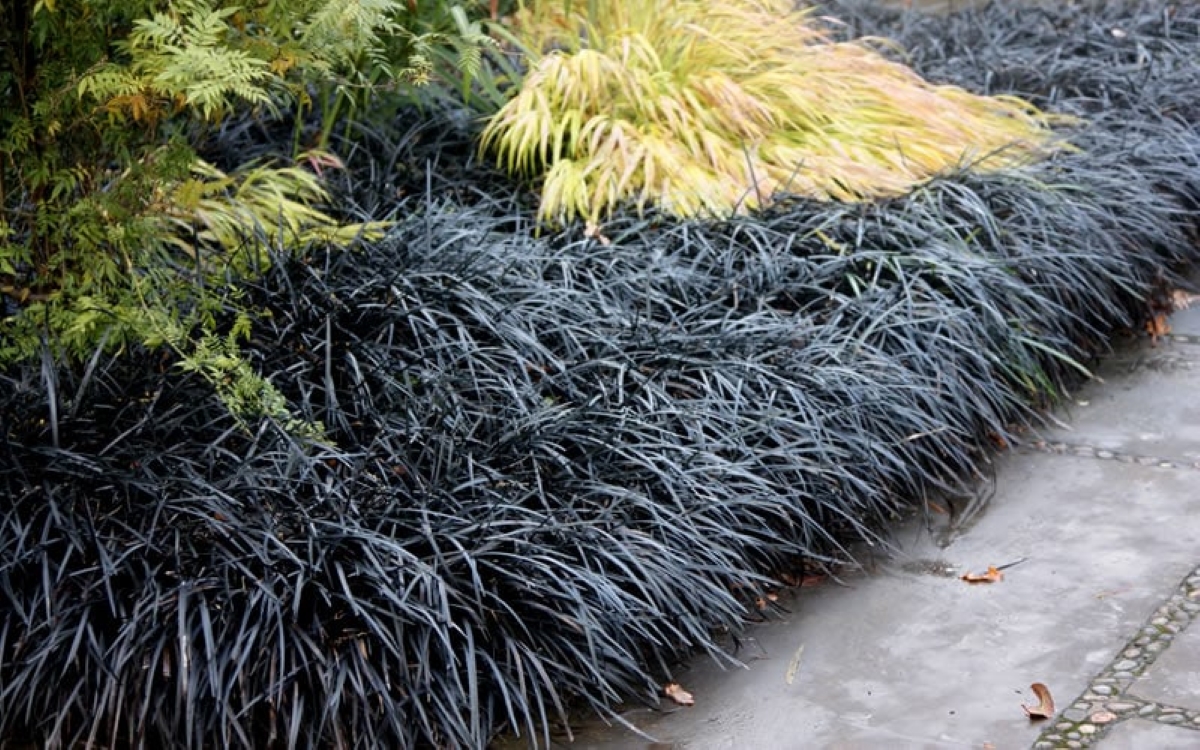
A relative of asparagus, Mondo grass is a perennial ornamental grass. The evergreen clumps enjoy fertile, slightly acidic soil that drains well. Black Mondo is one of few “black” plants; its purplish-black foliage is an excellent contrast to green foliage and multiple flower colors. The grass also can produce deep lavender blooms in fall. It prefers full or partial sun (needing shade in hot climates) and its mounds seldom reach more than a foot high and wide.
Best for: Asian gardens, along ponds, as a mounding ground cover or border
Hardiness zones: 5 to 10
FAQs
The easiest ornamental grasses to grow are those that are native to your region. This means they already have adapted to typical rain, heat, cold, and wind in the area and are less susceptible to pests. Having said that, most ornamental grasses require little care, other than an annual trim or shearing just before they start the growing season. Among those common to many regions, switch grasses, sedges, and feather-reed grasses rank among the easy-care options.
Most true grasses look best when cut back to a few inches above the ground. When to cut back ornamental grasses? It depends on the grass and your location, but typically you’ll want to do this just before the grass’s growing season begins each year. It is always wise to check care information on plant tags. Some evergreen ornamental grasses (such as sedges) do not require cutting, and might even look worse after a trim. Some also need dividing every few years.
To help birds and provide winter interest in your garden, it’s best to let most ornamental grasses flower and fade, and then cut them down in late winter or early spring. Leave evergreen ornamental grasses alone and check the plant care instructions on these and other grasses.
Most ornamental grasses prefer at least partial sun, but this varies greatly based on the particular plant and the environment in which it grows. For example, if a grass thrives up to the heat of zone 9 and you live in that zone or higher, it might fare best with some afternoon shade to protect it from heat. A few on this list, such as Japanese forest grass, prefer shade.
Any ornamental grass labeled as a perennial (for your growing zone) will come back every year. Some, like the red rooster sedge on this list, may return for just a few years. If a grass is labeled as an annual, it likely will not come back. Most annual ornamental grasses are better for containers. Also, note that a grass considered perennial in your region will probably get colder in a container than in the ground, so aim for a zone or two warmer if choosing perennials for containers.

